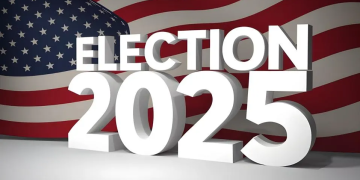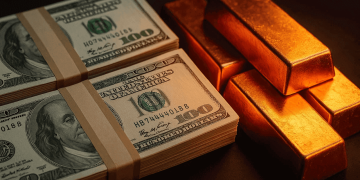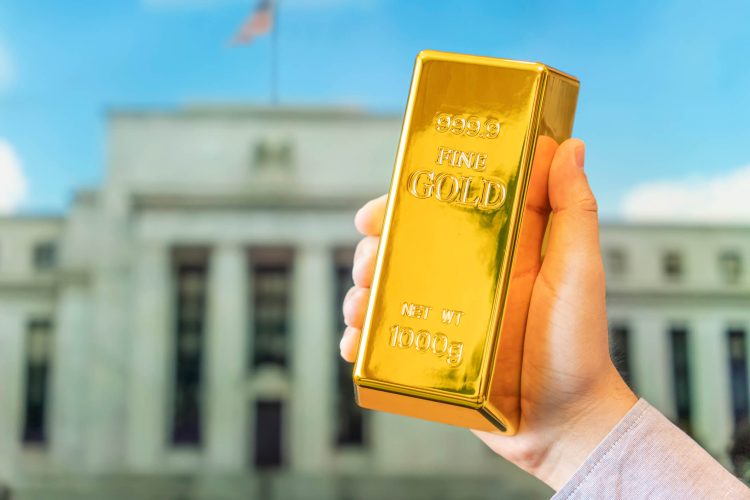Correlation Breakdown: Gold vs. USD vs. Bitcoin
Gold’s latest surge to all-time highs—breaking above $2,400 per ounce in early 2025—has defied conventional wisdom. Traditionally, gold has had an inverse correlation with the U.S. dollar, as a stronger greenback tends to dampen the appeal of dollar-denominated commodities. Yet in this cycle, that correlation has weakened significantly. The U.S. Dollar Index (DXY) remains elevated due to persistent rate differentials and global demand for Treasuries, but gold continues its ascent, suggesting that other forces are at play. Notably, geopolitical hedging, institutional rotation, and central bank accumulation are overriding simple dollar dynamics. Meanwhile, the rise of Bitcoin has added another layer of complexity. Once touted as “digital gold,” Bitcoin has underperformed during recent bouts of geopolitical instability and inflationary concern, while gold has thrived. In fact, during the recent Middle East escalations and sovereign debt repricing, gold showed a positive decoupling from crypto, indicating that traditional hedging behaviors are resurfacing. Veteran traders note that Bitcoin and gold now serve different investor psychology profiles—Bitcoin caters to risk-on speculation, while gold serves as a proven risk-off asset. This divergence has led portfolio managers to once again reevaluate gold’s unique role in asset allocation, separate from both fiat currency cycles and crypto volatility.
Mining Stocks vs. Physical Metal Exposure
The recent rally has also rekindled the age-old debate between direct physical gold exposure and gold mining equities. Physical gold provides a store of value, especially during currency debasement and monetary policy uncertainty. However, it lacks yield and is subject to storage and liquidity frictions. In contrast, mining stocks—particularly major producers like Newmont Corporation, Barrick Gold, and Agnico Eagle—offer leveraged upside to rising gold prices but come with operational, geopolitical, and equity market risks. In 2024, mining stocks initially lagged the spot gold rally due to higher input costs (especially energy), ESG-related permitting delays, and investor skepticism. But that dynamic is shifting. In Q1 2025, the GDX and GDXJ ETFs—tracking large and mid-tier miners—outperformed gold itself, buoyed by improving margins, dividend boosts, and consolidation trends in the industry. Veteran commodity traders are selectively adding mining exposure to complement physical holdings, focusing on companies with low all-in sustaining costs (AISC), stable jurisdictions, and strong free cash flow. Canadian and Australian-listed miners are especially attractive, given currency tailwinds and favorable tax regimes. There’s also renewed interest in royalty and streaming companies like Franco-Nevada and Wheaton Precious Metals, which provide exposure to gold price movements without direct operational risk. For long-term holders, a blended strategy—50% physical, 50% mining equities—is emerging as a preferred allocation.
Central Bank Buying Trends
Perhaps the most critical tailwind behind gold’s record-breaking move is the unprecedented central bank demand. According to the World Gold Council, central banks added over 1,200 metric tons of gold to their reserves in 2024—the highest level since record-keeping began. This trend shows no signs of slowing in 2025. Emerging market central banks, in particular, are accelerating gold purchases to diversify away from dollar dependence, especially amid rising U.S. fiscal concerns and weaponization of financial sanctions. Countries like China, Turkey, India, and several Gulf states are at the forefront of this movement. China’s official gold reserves rose for the 18th consecutive month in April 2025, signaling a long-term commitment to monetary hedging. Analysts argue that this trend has strategic dimensions—gold is being viewed not merely as a monetary metal but as a sovereign shield. The declining trust in U.S. Treasuries post-2023 debt ceiling drama and the freeze of Russian assets after the Ukraine invasion have reawakened a preference for non-credit-based stores of value. Even Western central banks are subtly increasing their gold allocations, reversing years of disinvestment. This sustained institutional demand provides a structural floor for gold prices and reinforces the idea that we are in a new monetary era—one where trust in fiat systems is weakening and tangible assets are back in vogue.

What Veteran Traders Are Doing Next
With gold breaking new ground, the key question now is whether this marks a sustainable breakout or a blow-off top. Veteran traders aren’t betting on a sudden reversal. Instead, they’re managing upside momentum while preparing for volatility spikes. One common approach is scaling into positions using options collars or synthetic longs to cap downside. Others are allocating to managed futures and macro hedge funds that benefit from directional commodity trends. Some are looking at inter-market spreads—such as long gold vs. short platinum or copper—to express views on global growth deceleration and relative scarcity. Another trend is the use of tokenized gold platforms, like Paxos and Tether Gold, to gain exposure with greater liquidity and ease of settlement. These instruments are particularly popular in Asia and the Middle East, where demand for gold is cultural as well as financial. Veteran macro strategists also emphasize watching real yields—the spread between Treasury yields and inflation expectations—as a key driver. If the Fed begins cutting rates in late 2025 while inflation remains sticky, real yields could compress further, boosting gold’s appeal. The technical picture supports bullish continuation: momentum indicators like RSI remain in a healthy zone, and institutional inflows into gold ETFs have picked up after years of stagnation. In summary, seasoned players are not chasing gold blindly, but they’re certainly not shorting it either. Risk-managed positioning, thematic overlays, and asymmetric payoff strategies are the preferred playbook.
Is This the Start of a New Secular Bull Cycle?
The broader macro backdrop suggests that gold’s breakout may not be an anomaly but the start of a secular bull cycle. After a decade dominated by deflationary forces and tech-led equity exuberance, the pendulum may be swinging toward hard assets. Rising geopolitical fragmentation, fiscal indiscipline, and re-industrialization policies are inflationary tailwinds. As countries prioritize resilience over efficiency, the cost structures of globalization are being unwound, and gold stands to benefit from this structural realignment. Moreover, investor psychology is shifting. The idea of a permanent low-rate, disinflationary environment is being challenged by stagflation concerns, energy supply disruptions, and demographic reversals in key economies. Gold’s re-rating reflects this new uncertainty premium. Veteran investors recall that the 1970s gold bull market was not linear—it had sharp pullbacks but lasted over a decade due to systemic distrust. Today’s backdrop rhymes with that era, albeit with modern complexities like digital finance and multipolar reserve currencies. The emergence of BRICS+ countries pushing for alternative payment systems and the decline in petrodollar dominance all point to a diminishing role for dollar hegemony, indirectly enhancing gold’s reserve appeal.
Conclusion: Respect the Trend, Hedge the Extremes
For modern investors, gold is once again asserting itself not just as a crisis hedge but as a strategic asset. The convergence of structural central bank demand, weakening fiat trust, real yield compression, and geopolitical upheaval creates a fertile environment for long-term gold exposure. Veteran traders aren’t treating this as a bubble but as a revaluation. They’re rotating capital into gold gradually, using tactical overlays to manage risk, and exploring complementary exposures in mining stocks and tokenized assets. As the world enters a period of elevated uncertainty—be it from elections, wars, or economic bifurcation—gold may no longer be the asset you “hide” in, but the one you lead with.













































